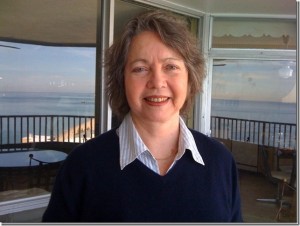
By Robert Croan
The South Florida Symphony Orchestra offered a bit of participation in music history in its most recent program [heard March 27 at The Parker in Fort Lauderdale] when guest clarinetist David Shifrin soloed in Ellen Taafe Zwilich’s Clarinet Concerto — a work he premiered at New York’s Lincoln Center in 2003.
Adding to the aura of authenticity was the presence of the composer, a Miami native (b. 1939) and the first woman to have received the Pulitzer Prize for music — in 1985, for her Symphony No. 1.
Conducted by the local orchestra’s music director, Sebrina Maria Alfonso, it was an absorbing and varied evening, which opened with Three Dance Episodes from Leonard Bernstein’s On the Town, followed, after intermission, by Maurice Ravel’s Bolero and the 1919 version of Igor Stravinsky’s Firebird Suite.
Zwilich spoke at the start of the evening, about the unique and unusual circumstances of her concerto’s origin. Composing for a scheduled premiere in 2001, Zwilich was working on the second movement when the horrific events of 9/11 occurred, and the premiere had to be postponed. In recognition of this, she refashioned that movement as a scream-punctuated Elegy, in memoriam to the victims, casting the already completed lively opening movement as “bustling NYC before 9/11,” creating a scherzo-like third movement depicting “back to life,” and closing the piece with quiet but cautiously optimistic “reflections.” It’s a beautiful work, already an important part of the current century’s classical repertory, as well as a welcome addition to SFSO’s roster of works performed.
Shifrin’s rendition of the solo part may be considered definitive. At 74, he is in full technical command of his instrument, with a seemingly unlimited palette of sonic colors at his disposal, and a sense for phrasing and nuance that delineated the concerto’s widely varied emotional path. Conductor Alfonso reflected this as well, in her deft leadership of the players through this often arduous new territory. After warming up on the Bernstein dances, the orchestra responded to her with utter attention and high expertise.
At the start of the concert’s second half, Alfonso introduced Ravel’s Bolero as “the piece most of you came to hear.” Bolero sounds simple, but is actually quite difficult to carry off. The underlying rhythmic pattern is reiterated by the snare drum — superbly rendered here by Lucas Sanchez — 169 times during the work’s approximately 15-minute course. It’s a major test for drummer and conductor alike, to keep the beat steady and controlled — which both artists did very well at this performance. It’s noteworthy, in this context, that Alfonso has a very clear beat.
Bolero’s rhythmic repetitions allow the listener to concentrate on the work’s two overlying melodies, assigned to various soloists and instrumental combinations. In this performance, those solo parts were unevenly rendered, moments of individual virtuosity peppered with some jarring stray notes among the woodwinds and brasses. The ultimate effect, though, was as it should be, eliciting thunderous applause and a standing ovation.
The real showpiece for the South Florida orchestra was Stravinsky’s magnificent Firebird, which exploits instrumental color and ingenious rhythmic multiplicities in seemingly endless combinations. Composed in 1910 as an hour-long one-act ballet for Sergey Diaghilev’s Ballets Russes in Paris, the extracts in the concert suite combine the rhythms and melodies of Russian folk music with the orchestral resourcefulness the young Stravinsky had learned from his teacher Nicolai Rimsky-Korsakov.
Alonso seemed to relish all the music’s challenges, including the dramatic arc of the ballet’s fairytale story. She built from the subdued opening measures to the instrumentally varied depictions of the princesses, cresting in the magnificent “Infernal Dance of the King,” then returning to the repose of the final “Lullaby.” The orchestra was at its best throughout the “Firebird” segment, rising to the demands and bringing the evening to a most satisfying conclusion.